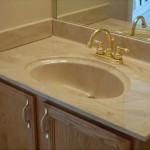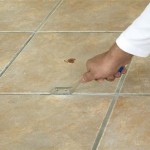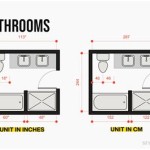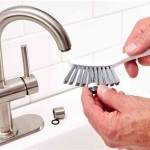Can You Put Bathroom Wall Panels on Top of Tiles?
Bathroom renovation projects often involve a desire for a fresh, modern look. While tiling is a popular choice for bathroom walls, it can sometimes feel dated or require significant effort to remove and replace. This raises the question: can bathroom wall panels be installed directly on top of existing tiles? The answer is a bit nuanced, as it depends on several factors, including the type of tiles, the condition of the existing installation, and the type of panels you choose.
Benefits of Installing Wall Panels Over Tiles
Installing wall panels over existing tiles offers several advantages, making it a tempting option for homeowners seeking a quick and cost-effective renovation:
- Time and Cost Savings: Removing existing tiles can be a laborious and time-consuming process, often requiring specialized tools and expertise. Installing wall panels directly over tiles eliminates this step, saving both time and money on labor and material costs.
- Minimal Disruption: Re-tiling involves significant dust and debris, potentially requiring temporary relocation or disruption to daily routines. Installing panels offers a cleaner and less disruptive alternative.
- Versatility and Design Flexibility: Wall panels come in a wide range of materials, colors, and textures, offering a vast range of design options to suit any aesthetic preference. You can achieve a modern look with sleek, minimalist panels or a more traditional feel with wood-look or stone-effect options.
Considerations for Installing Wall Panels Over Tiles
While installing wall panels over existing tiles can be appealing, it's essential to consider several factors before embarking on the project:
- Tile Condition: Tiles must be in sound condition, securely adhered to the wall, and free from cracks, chips, or loose grout. Loose or damaged tiles need to be repaired or replaced before installing panels.
- Tile Material: Certain tile materials, like ceramic or porcelain, are smoother and easier to adhere to than others, such as textured or rough tiles. The panel manufacturer's instructions should provide guidelines for the suitability of specific tile types.
- Panel Type: Different panels offer varying levels of flexibility and adhesion properties. Some panels are designed specifically for installation over existing surfaces, while others require a smooth and level substrate.
- Thickness: The thickness of the panels can impact the overall appearance and functionality of the bathroom, potentially affecting door clearances or the placement of fixtures.
- Moisture Resistance: Bathroom environments are prone to moisture and humidity. It's crucial to choose panels designed for wet areas and ensure proper ventilation to prevent mold and mildew growth.
Installation Process and Potential Challenges
The installation process for wall panels over existing tiles typically involves the following steps:
- Surface Preparation: Ensure the tiles are clean, dry, and free of debris. Remove any loose grout or sealant, and fill in any cracks or gaps. You might need to apply a primer to create a suitable surface for the panels.
- Panel Installation: Depending on the type of panels, you might need to use adhesive, screws, or a combination of both. Ensure the panels are cut to size and installed precisely, following the manufacturer's instructions.
- Finishing Touches: Once the panels are installed, apply any necessary sealant around the edges and fixtures. You might also need to install trim or molding to create a finished look.
While installing panels over existing tiles can be a straightforward project, there are potential challenges to consider:
- Uneven Surfaces: Tile surfaces might not be perfectly smooth or level, leading to uneven panel installation and an aesthetically displeasing result. Consider using a leveling compound or adjusting the panel installation to compensate for unevenness.
- Moisture Issues: If the existing tile installation was not properly waterproofed, moisture could accumulate behind the panels, causing damage and mold growth. Ensure the tile installation is sound and consider installing a moisture barrier behind the panels for additional protection.
- Panel Thickness and Functionality: The additional thickness of the panels might affect door clearances, fixture placement, or the overall functionality of the bathroom. Consider these factors before starting the project.
It's always best to consult with a qualified contractor or a professional installer for advice and guidance on the feasibility and proper techniques for installing wall panels over existing tiles. Their expertise can help ensure a successful and durable renovation project.

Can You Put Bathroom Wall Panels Over Tiles Igloo Surfaces

Panel Over Tiles The Bathroom Marquee

Can You Panel Over Tiles Everything Need To Know

Panel Over Tiles The Bathroom Marquee
Fitting Pvc Wall Panelling Over Bathroom Tiles Guru
Fitting Pvc Wall Panelling Over Bathroom Tiles Guru

Panel Over Tiles The Bathroom Marquee
Fitting Pvc Wall Panelling Over Bathroom Tiles Guru

Can You Panel Over Tiles Everything Need To Know

Panel Over Tiles The Bathroom Marquee
Related Posts







